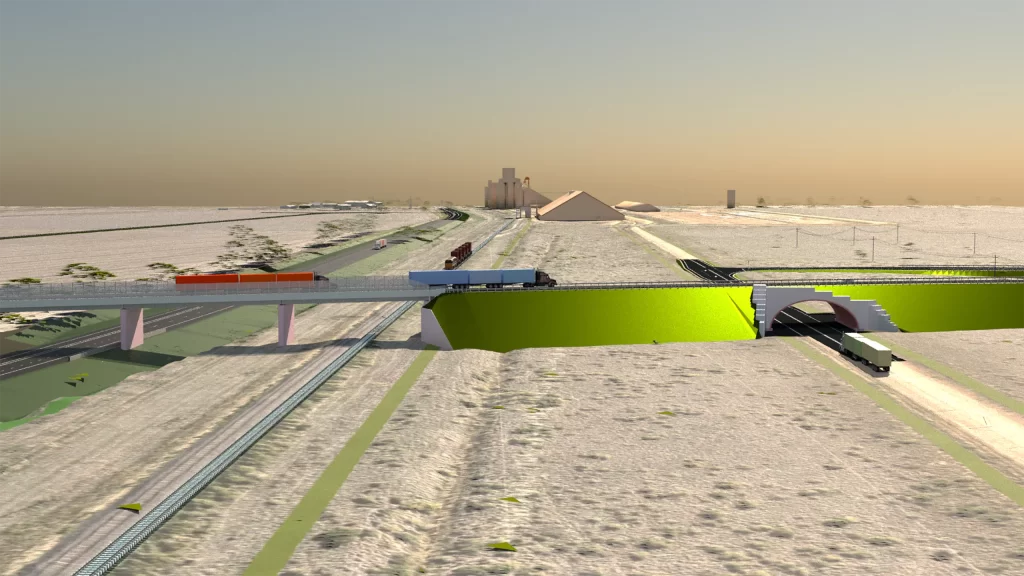Project Overview
MU Group was engaged by Liverpool City Council to provide a concept, environmental assessment and detail design for the proposed upgrades to Governor Macquarie Drive (GMD) from Hume Highway to the Australian Turf Club (ATC) access road. These works aim to address localised traffic congestion in the area, flooding, cater for the existing and future freight and improve pedestrian and cycling facilities along the corridor.
Delivering vital road infrastructure for the growing community of Liverpool
GMD plays a pivotal role in shaping the future of Liverpool, a rapidly expanding suburb in Greater Sydney. As the city continues to grow, this vital road infrastructure serves as a critical link, addressing the long-term objectives set by Liverpool City Council for an integrated transport network in that area. Enhancing transport options, accessibility, and connectivity, GMD connects Warwick Farm, links to the Liverpool City Centre, and supports the Moorebank intermodal facility’s efficient operations.
Challenges and how these were managed
The project required the widening of Governor Macquarie Drive to a four-lane divided carriageway, with localised widening at the Hume Highway. The detailed design was developed in two stages to support council’s procurement strategy. MU Group design for Stage 1 will seamlessly tie into the proposed Stage 2, reducing redundant works.
Utilities
MU Group managed partial acquisition of private properties and the relocation of complex utilities including high- and low-pressure gas mains, Telstra, Optus, NBN, Sydney Water, overhead and underground electrical into a constrained utilities corridor.
Drainage
With very flat grades on GMD, pavement drainage was challenging with respect to matching receiving downstream pipe levels. This was resolved with the inclusion of grated kerb drains which allowed good pavement drainage while reducing pipe outlet levels.
Environmental
MU Group managed the environmental assessment and approvals which included unique challenges. Designing a road adjacent to the Horseshoe Lagoon costal wetland triggered an EIS (Stage 2) which required close consultation and collaboration with the Department of Planning and Environment (DPE) to successfully change SEPP mapping.
Structural
MU Group’s design included footbridge structures on both sides of GMD to facilitate shared paths crossing the underpass. This reduced the need for extensive dual culvert extensions proposed in the reference design and reduced constructability risks, addressing concerns raised by ATC regarding pathway grades and culvert alignment risks for horses and riders/trainers.
The project includes more than 100m of 2m high retaining walls in a swamp area along GMD adjoining the Horseshoe Lagoon.
The value we brought to the project
01
MU Group was able to engineer a solution that effectively eliminated redundant works in Stage 1 and future-proofed the widening of the culvert for the subsequent construction stage.
02
Through our value engineering and risk management focus we have actively identified opportunities to reduce overall project costs and accelerate the project schedule in line with the client’s requirements.



